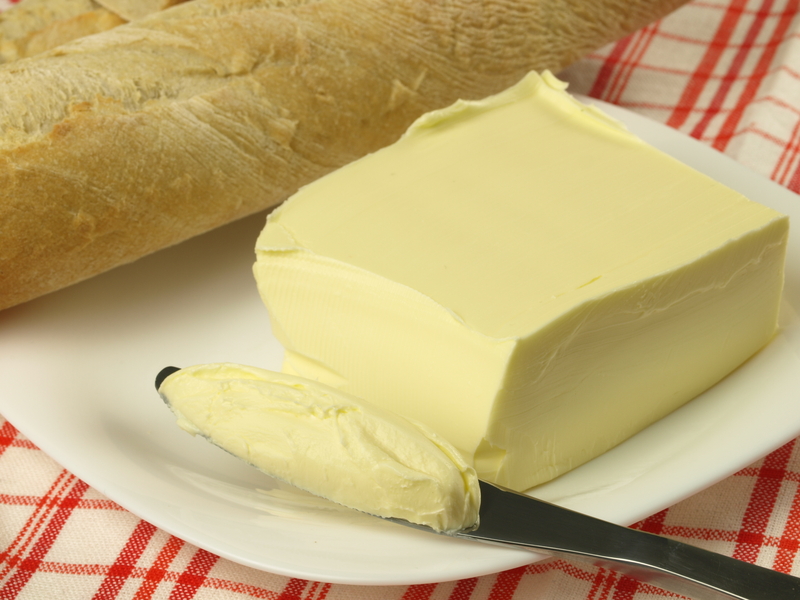Master Techniques to Remove Stubborn Burnt-on Residue from Your Stovetop
Posted on 19/06/2025
Master Techniques to Remove Stubborn Burnt-on Residue from Your Stovetop
Stovetops are at the heart of every humming kitchen, but spills and burnt-on residue can turn your cooking surface into an eyesore. If you're struggling to tackle stubborn burnt-on messes, you're not alone. Learning the best ways to remove burnt-on residue from your stovetop can not only restore its original shine but also extend its life and keep your cooking environment healthy. This comprehensive guide will show you effective, safe, and time-tested techniques to clean even the most resilient burnt food and stains from every type of stove surface.
Understanding Burnt-on Residue and Why It Happens
It's frustrating when that little spill from yesterday's dinner becomes a stubborn, carbonized patch on your stovetop. These burnt-on residues are often caused by spills of sugary or fatty foods that get repeatedly heated, turning into tough, sticky, or crusty spots. Over time, these burnt stains can accumulate, making your stovetop look grimy and even affecting its function and safety.
- Gas stovetops tend to gather burnt spills around burners and grates.
- Electric coil stovetops collect burnt-on gunk beneath and on the coils.
- Glass and ceramic stovetops must be treated carefully to avoid scratches, but they can show every mark.

Preparation & Safety Before You Begin Cleaning
Before launching into cleaning your stovetop, it's vital to ensure both safety and efficiency. Here are some steps you should always follow:
- Turn off all burners and ensure the stovetop is cool.
- Unplug electric stoves if applicable.
- Wear gloves to safeguard your hands from any harsh chemicals or sharp residue.
- Gather your cleaning materials: soft cloths, sponges, non-scratch scrubbers, a utility knife or razor scraper (for glass-ceramic), baking soda, vinegar, mild dish soap, and a dedicated stovetop cleaner if needed.
Pro Tip:
Always test a small area first, especially if using a new cleaner, to ensure it won't discolor or scratch the surface.
Efficient Home Remedies for Removing Burnt-on Stains
You don't always need harsh chemicals to tackle caked-on stove residue. Sometimes, common household items offer the best solutions (and are more eco-friendly).
Baking Soda and Vinegar Method
- Sprinkle a generous layer of baking soda over the burnt areas.
- Lightly wet a cloth or sponge and place it over the area to help the baking soda stick and activate.
- Spray or pour white vinegar onto the baking soda. Let it fizz for 10-15 minutes.
- Gently scrub in circular motions with a non-abrasive pad.
- Wipe away all residue with a damp cloth and dry the area.
Hydrogen Peroxide and Baking Soda Paste
- Mix a thick paste of baking soda and hydrogen peroxide.
- Apply directly onto the burnt-on gunk and let sit for 15-30 minutes.
- Use a soft brush or sponge to scrub the area.
- Remove the loosened residue and clean with a damp cloth.
Lemon Juice and Salt Scrub
- Cut a lemon in half and rub it onto the stubborn residue.
- Sprinkle salt over the lemon juice for added abrasion.
- Let it sit for a few minutes before scrubbing.
- Wipe clean with a moist sponge.
These techniques are safe for most stovetops, but always check manufacturer recommendations first!
Specialized Techniques for Different Stovetop Types
Not all stovetops are created equal--each type demands unique care to prevent damage. Here's how to adapt your cleaning strategy depending on your cooking surface:
How to Remove Burnt-on Mess from Gas Stoves
- Remove grates and burner caps.
- Soak them in hot, soapy water for 20-30 minutes to loosen residue.
- Use a mixture of baking soda and water as a gentle abrasive for scrubbing.
- For metal parts, a bit of vinegar spray helps dissolve grease.
- Scrape carefully with a non-metal utensil if needed, to protect the finish.
- Dry all parts thoroughly before replacing.
Cleaning Burnt-on Residue from Electric Coil Stovetops
- Carefully remove the electric coils after ensuring your stove is unplugged and cool.
- Wipe coils gently with a damp, soapy cloth--do not submerge them in water.
- For drip pans and under-coil surfaces, soak in vinegar or soapy water, then scrub and rinse.
- For stubborn burnt patches: use a baking soda paste and let it sit on the stains before scrubbing.
How to Tackle Burnt Stains on Glass or Ceramic Stovetops
- Remove any loose debris with a soft, dry cloth.
- Spray with a mixture of equal parts vinegar and water, then let it sit for several minutes.
- Use a razor blade scraper at a 45-degree angle to gently scrape off burnt material--be extremely gentle to avoid scratching!
- Apply a non-abrasive cleaner or a paste of baking soda and water, then buff clean.
- Polish with a soft, dry microfiber cloth for shine.
When Should You Use Commercial Stovetop Cleaners?
Sometimes, homemade remedies aren't enough for severe burnt-on residue. Choose a commercial cleaner designed for your stove type (read the label to ensure compatibility). The best stovetop cleaners efficiently break down burnt food and grease without damaging the finish.
- Cream-based cleaners are ideal for glass and ceramic stoves, as they spread easily and can be buffed.
- Foaming sprays can work for metal or enamel surfaces, offering better coverage for vertical or hard-to-reach spots.
- Degreasers tackle tough build-up, but always rinse thoroughly to prevent residue and odors.
Expert Tricks for Removing Extremely Stubborn Burnt Spots
Soak and Steam Method
To soften extremely stubborn, burnt-on messes, try steaming:
- Lay a wet towel or thick cloth over the area. Turn burners on low for just a minute to create gentle steam (do not leave unattended!).
- Turn off the stove and leave the cloth covering the spot for 10 minutes.
- Once cooled, scrub gently--the burnt residue should be loosened.
Use Razor or Utility Blades--With Caution
For hard glass-ceramic residues that refuse to budge, carefully scrape with a razor blade held at a shallow angle. Only apply light, even pressure to avoid scratching or cracking the surface. Never use blades on enamel or composite stoves.
Magic Eraser Sponges
Specialized melamine foam sponges (Magic Erasers) are excellent for lifting stubborn stains from smooth stovetops. Moisten the sponge and gently rub--that's it!
How to Prevent Burnt-on Residue in the Future
While knowing how to remove burnt-on messes from your stovetop is invaluable, prevention always makes life easier. Here are smart habits to reduce future build-up:
- Wipe spills immediately when safe to do so--prevention is your best tool.
- Use stove burner liners on gas and electric models for easier cleanup.
- For glass-ceramic stoves, never slide heavy pots across the burners. This prevents abrasion and accidental spills.
- Incorporate weekly deep-cleaning into your kitchen routine, even if stains are minor.
Common Questions About Removing Burnt-on Stove Residue
Can you use oven cleaner on your stovetop?
Generally, no. Oven cleaners are powerful and may damage glass, enamel, or metal coatings on your stove. Always stick to cleaners specified for stovetops.
How often should you deep-clean your stovetop?
A weekly deep cleaning is ideal for preventing burnt-on disasters, but immediate spot-cleaning after spills is just as important.
Why is my stovetop still stained after cleaning?
Some stubborn stains need several treatments with different methods, especially if they're old or carbonized. Repeat your cleaning method or switch to a commercial solution for the best results.

Final Thoughts: Enjoy a Clean, Sparkling Stovetop
Maintaining a spotless stovetop doesn't need to be a chore. With these master techniques to remove burnt-on residue from your stove, you can restore your cooking surface's shine, protect your appliances, and impress every guest who peeks into your kitchen.
- Always match your cleaning method to your specific stovetop.
- Use natural solutions first--for your health and the environment!
- Be patient; older residue might take a few tries to disappear.
Regular cleaning, proper products, and a bit of elbow grease are your best allies. The result? A kitchen centerpiece that is both functional and beautiful--ready to help you cook up your next culinary masterpiece.
Frequently Searched Keywords Related to Stove Cleaning:
- How to get burnt food off stovetop
- Remove burnt-on mess from glass stove
- Burnt stains on electric stove
- Best stovetop cleaner for burnt residue
- Homemade burnt-on grease remover
Happy cleaning, and may your stovetop always shine!




